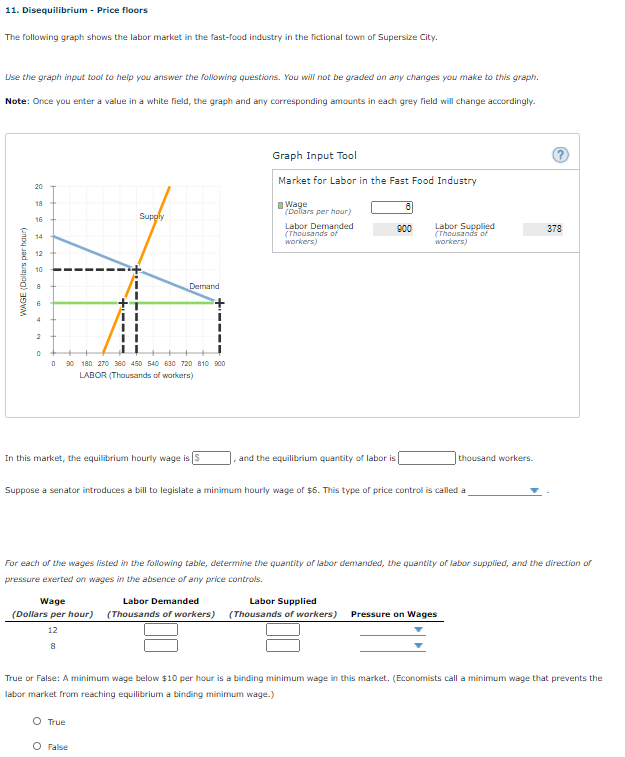Legislating a minimum wage is commonly seen as an effective way of giving raises to low wage workers.
Disequilibrium price floor.
A possible result of disequilibrium is.
With a price of p1 the demand q1 is greater than the supply q3.
But this is a control or limit on how low a price can be charged for any commodity.
If demand greatly exceeds supply then the price is set too low.
It is legal minimum price set by the government on particular goods and services in order to prevent producers from being paid very less price.
Binding floor price gives chance to the government to set prices on certain goods that are high and it also creates economic disequilibrium.
In a free market you would expect firms to deal with this disequilibrium by putting up the price to ration the demand.
Disequilibrium is a situation where internal and or external forces prevent market equilibrium from being reached or cause the market to fall out of balance.
A good example of how price floors can harm the very people who are supposed to be helped by undermining economic cooperation is the minimum wage.
Which statements correctly explain price floors and price ceilings.
A possible result of disequilibrium is excess demand lower demand.
Price floor is a situation when the price charged is more than or less than the equilibrium price determined by market forces of demand and supply.
Like price ceiling price floor is also a measure of price control imposed by the government.
Such kind of policy can set a limit to sell the goods at market price or below the price of floor rate and it can also give impact on low wages and less growth of some economic factors.
A price that does not accurately reflect the forces of supply and demand.
This can be a short term byproduct of.
This disequilibrium will lead to a shortage q1 q3 and long queues as consumers try to get the limited supply.
The federal minimum wage at the.
Check all that apply.
There will be a surplus of 3 000 000 if the government imposes a price floor on wheat at 5 and agrees to purchase any surpluses how much will the government be forced to spend.
In this case it is a surplus of.
If supply greatly exceeds demand then the price is set too high.
In either case the price must change to achieve an equilibrium price that balances supply and demand.
Unfortunately it like any price floor creates a surplus.
Perhaps the best known example of a price floor is the minimum wage which is based on the normative view that someone working full time ought to be able to afford a basic standard of living.
Ineffective price floors tend to be too high.
If the government imposes a price floor on wheat at 5 predict the amount of disequilibrium.
Disequilibrium due to price below equilibrium.

